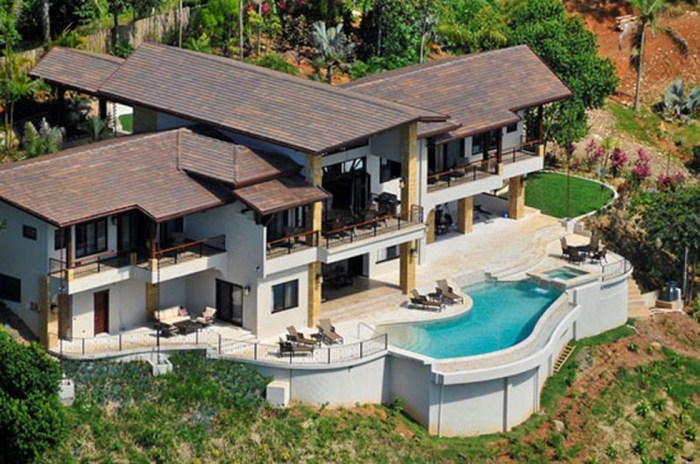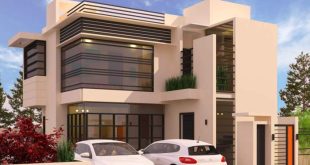Architectural Styles and Their Geographic Distribution

What country have the best house design – Architectural styles reflect a nation’s history, climate, and cultural values. The interplay of these factors has resulted in a stunning diversity of building designs across the globe, each with its own unique characteristics and aesthetic appeal. Examining these styles provides insight into the societies that created them.
The geographical distribution of architectural styles is often closely tied to the availability of materials, local traditions, and environmental considerations. For instance, areas with abundant timber often developed timber-framed structures, while regions with readily available stone utilized this material extensively in their constructions. Climatic conditions also played a significant role, influencing elements such as roof pitch, window size, and wall thickness.
Examples of Iconic Buildings and Their Design Elements
The following examples illustrate the diversity and richness of architectural styles across different countries. These iconic structures represent not only architectural achievements but also significant historical and cultural moments.
-
The Great Pyramid of Giza, Egypt: Imagine a colossal structure of precisely cut and fitted limestone blocks, rising majestically against the desert sky. This ancient marvel, built around 2580-2560 BC, exemplifies ancient Egyptian architecture with its imposing scale, smooth surfaces, and internal chambers. The pyramid’s design reflects a sophisticated understanding of mathematics and engineering for its time, and its enduring presence symbolizes the power and beliefs of the pharaohs.
-
The Parthenon, Greece: Picture a majestic temple perched atop the Acropolis in Athens, its iconic Doric columns standing as a testament to classical Greek architecture. Constructed in the 5th century BC, this temple dedicated to the goddess Athena showcases the elegance and harmony of classical Greek design. The use of meticulously proportioned columns, friezes depicting mythological scenes, and a carefully balanced structure exemplifies the Greek emphasis on order and symmetry.
-
The Forbidden City, China: Envision a vast complex of palaces and courtyards enclosed by towering red walls, a symbol of imperial power in Beijing. Built over several centuries, starting in the early 15th century, this architectural masterpiece exemplifies traditional Chinese design. The use of intricate wooden structures, vibrant colors, and symbolic elements such as dragons and phoenixes, reflects the grandeur and complexity of the imperial court.
-
Kinkaku-ji (Golden Pavilion), Japan: Visualize a stunning three-story pagoda shimmering with gold leaf, reflected in a serene pond. This Zen Buddhist temple in Kyoto, built in the 14th century, showcases the elegance and serenity of Japanese architecture. The delicate wooden structure, its curved roofs, and the use of natural materials exemplify the Japanese aesthetic of harmony with nature.
-
Sagrada Familia, Spain: Imagine a breathtaking basilica in Barcelona, its soaring spires and intricate facades a testament to Antoni Gaudí’s unique architectural vision. Construction began in 1882 and continues to this day, this masterpiece of Catalan Modernism showcases Gaudí’s innovative use of organic forms, vibrant colors, and symbolic elements inspired by nature and religious themes. The basilica’s unique design, combining Gothic and Art Nouveau elements, continues to inspire awe and wonder.
Impact of Climate and Environment on House Design

Climate significantly influences the design and construction of houses. Architectural styles have evolved over centuries to adapt to local environmental conditions, ensuring both comfort and sustainability. Understanding these adaptations provides valuable insight into the relationship between human habitation and the natural world.The design choices made for a dwelling are heavily shaped by the prevailing climate. Different climates demand different approaches to materials, insulation, and ventilation to create a comfortable and energy-efficient living space.
For instance, a house built in a tropical rainforest will differ drastically from one constructed in a desert or a temperate region.
Climate-Specific Design Adaptations
Climate directly impacts the materials used, the building’s orientation, and its overall structure. Tropical climates, characterized by high temperatures and humidity, necessitate designs that prioritize ventilation and shade. Temperate climates, with moderate temperatures and varying precipitation, allow for a wider range of design options, focusing on insulation and weather protection. Arid climates, with extreme temperatures and low humidity, require designs that minimize heat gain and maximize water conservation.
Material Selection and Climate Response
The choice of building materials is crucial for effective climate control. Materials with varying thermal properties influence a building’s ability to retain or release heat.
Determining the country with the best house design is subjective, varying greatly depending on personal preferences. However, many admire the minimalist Scandinavian designs or the intricate details of Japanese architecture. If you’re considering a specific layout, exploring options like a 3 bedroom house design can be a great starting point. Ultimately, the “best” design depends on individual needs and tastes, influencing the overall aesthetic and functionality of a home.
| Material | Tropical Climate | Temperate Climate | Arid Climate |
|---|---|---|---|
| Wood | Good ventilation, readily available, but susceptible to rot and insect damage in high humidity. Requires treatment for longevity. | Excellent insulator, aesthetically pleasing, relatively easy to work with. Requires appropriate treatment against moisture and decay. | Good insulator, but can expand and contract significantly with temperature fluctuations. Requires careful selection and treatment. |
| Stone | High thermal mass, can retain coolness, but can absorb and retain moisture in humid conditions. Requires proper drainage. | Excellent thermal mass, durable, aesthetically versatile. Can be expensive and require skilled labor. | High thermal mass, excellent for retaining coolness at night and releasing it slowly during the day. Can be expensive and difficult to work with. |
| Concrete | High thermal mass, requires good ventilation to avoid overheating. Can be susceptible to cracking in high humidity environments if not properly mixed and cured. | Can be used effectively with insulation for temperature regulation. Durable and relatively low maintenance. | High thermal mass, effective in mitigating temperature swings. Requires appropriate insulation and thermal bridging solutions. |
| Thatch | Excellent insulator, provides natural ventilation, readily available in many tropical regions. Susceptible to fire and pests. Requires regular maintenance. | Generally unsuitable due to vulnerability to moisture damage. | Not suitable due to flammability and susceptibility to damage from moisture and temperature fluctuations. |
Influence of Culture and Tradition on House Design: What Country Have The Best House Design
Cultural traditions profoundly impact residential architecture, shaping not only the aesthetic appearance of homes but also their functionality and social significance. These influences are evident in the choice of building materials, construction techniques, spatial organization, and decorative elements, reflecting the values, beliefs, and lifestyles of the inhabitants. Understanding these influences provides crucial insight into the diverse expressions of human settlement and adaptation across the globe.
The interplay between culture and house design manifests in diverse ways. Consider, for instance, the traditional Japanese minka farmhouse, characterized by its low-pitched roofs, natural materials (wood and thatch), and emphasis on natural light and ventilation. These features reflect the Japanese aesthetic appreciation for simplicity, harmony with nature, and adaptation to seismic activity. In contrast, the elaborate and ornate palaces and homes of the Mughal Empire in India showcase a different cultural expression, reflecting a rich history, power, and a preference for intricate detailing and luxurious materials like marble and precious stones.
These examples highlight how cultural values and priorities directly translate into the physical form of dwellings.
Traditional Building Materials and Techniques
The choice of building materials and construction techniques is often deeply rooted in cultural practices and readily available resources. In many parts of sub-Saharan Africa, traditional homes utilize locally sourced materials such as mud bricks, thatch, and timber, reflecting a sustainable and environmentally conscious approach to construction. These techniques have been passed down through generations, demonstrating adaptability to climate and resource availability.
Conversely, in regions with abundant stone resources, like parts of Europe, stone has been a primary building material for centuries, resulting in robust and long-lasting structures, often reflecting a sense of permanence and stability. The specific techniques employed, such as timber framing in Scandinavia or rammed earth construction in arid regions, also reveal cultural adaptations to specific environmental conditions and available expertise.
Evolution of House Design in Japan: A Visual Representation, What country have the best house design
Imagine a series of three stylized illustrations representing the evolution of Japanese residential architecture. Illustration 1: (Pre-1600s) Depicts a simple, thatched-roof dwelling, with a low profile, and a rectangular floor plan. The walls are made of mud and timber, and the overall aesthetic is rustic and functional. This represents the early forms of Japanese homes, built primarily from readily available materials and reflecting a close relationship with the natural environment.
Illustration 2: (1600s-1900s) Shows a more developed structure, perhaps a minka farmhouse. The roof is still low-pitched, but more elaborate, perhaps with wider eaves. The use of wood is more refined, with visible joinery and detailing. The structure is larger, indicating an increase in family size or social status. The inclusion of a garden or courtyard suggests a greater emphasis on aesthetics and harmony with nature.
Illustration 3: (1900s-Present) Illustrates a modern Japanese home, possibly incorporating traditional elements with modern materials and technology. The roof might be a modern interpretation of a traditional style, and while materials like concrete and glass are used, the overall design may still maintain a sense of simplicity and connection to nature, possibly through the use of natural light and landscaping. This represents the adaptation of traditional principles within a modern context.
Answers to Common Questions
What are some common materials used in different climates?
Tropical climates often utilize materials that promote ventilation and shade, like bamboo and lightweight wood. Arid climates often use materials with high thermal mass like adobe or stone to regulate temperature fluctuations. Temperate climates might use a variety of materials depending on the specific region and traditions.
How does government policy affect house design?
Government policies, such as building codes, zoning regulations, and incentives for green building, significantly influence house design. These policies can affect things like energy efficiency standards, building materials, and overall house size.
Are there any websites or resources for further research on global house design?
Numerous architectural websites, magazines, and academic journals offer in-depth information on global house design. Searching for specific architectural styles or geographical regions will yield relevant results.
 Interior Living
Interior Living
